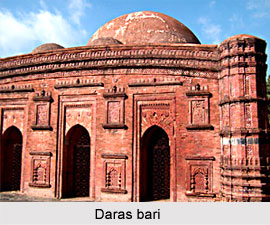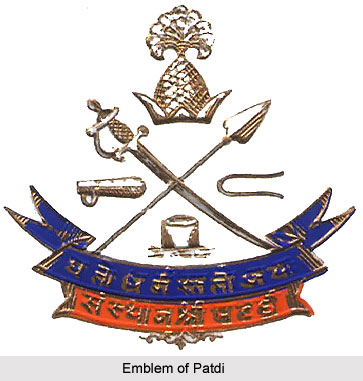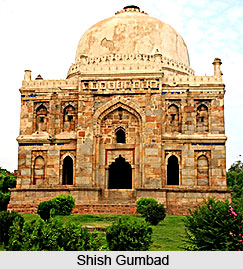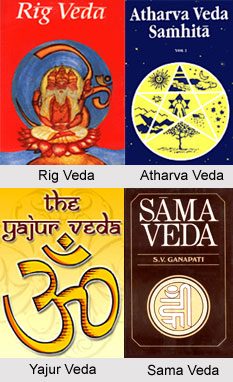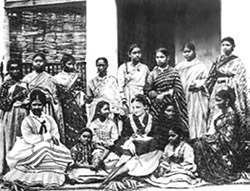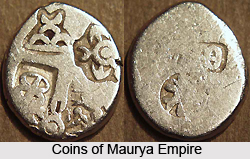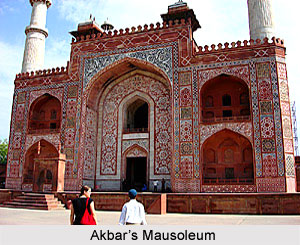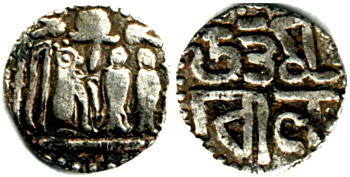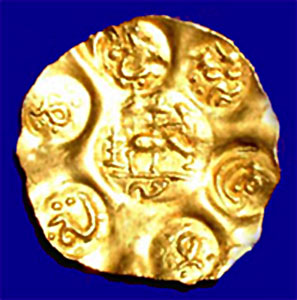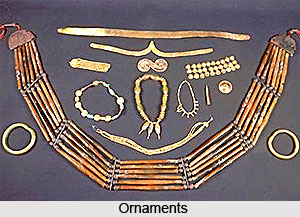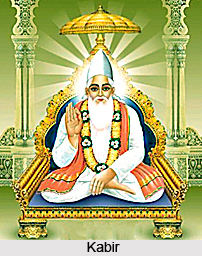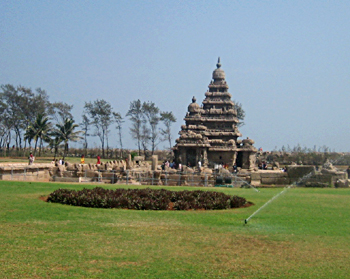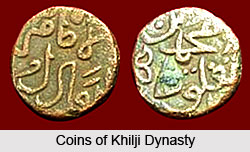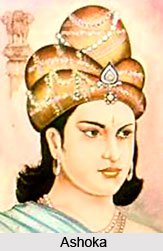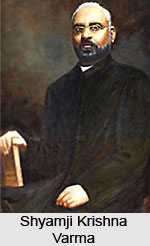 During the World War I in 1914, an organisation was established in Germany, namely the Berlin Committee. After 1915, it was renamed the Indian Independence Committee. The organisation was formed by Indian students and political activists who resided in the Germany. The organisation was established with the aim to promote the cause of Indian Independence. In the beginning the orgnisation was called the Berlin-Indian Committee. Later, this Berlin-Indian Committee played an instrumental part in the Hindu-German Conspiracy. Virendranath Chattopadhyaya, Champakaraman Pillai and Abinash Bhattacharya were the key members of the committee.
During the World War I in 1914, an organisation was established in Germany, namely the Berlin Committee. After 1915, it was renamed the Indian Independence Committee. The organisation was formed by Indian students and political activists who resided in the Germany. The organisation was established with the aim to promote the cause of Indian Independence. In the beginning the orgnisation was called the Berlin-Indian Committee. Later, this Berlin-Indian Committee played an instrumental part in the Hindu-German Conspiracy. Virendranath Chattopadhyaya, Champakaraman Pillai and Abinash Bhattacharya were the key members of the committee.
Shyamji Krishna Varma along with a number of Indians formed the India House in 1905 in England. Dadabhai Naoroji, Lala Lajpat Rai, Madame Bhikaji Cama and others also supported the organisation. To promote nationalistic work, Berlin Committee started offering scholarships to Indian students. The group was seen as a major platform for anticolonial opinions and views. At that time, `Indian Sociologist` was a praiseworthy publication, published by Krishna Varma. Notable men like Veer Savarkar, Virendranath Chattopadhyaya, Har Dayal were the associated members of the Indian House.
But the Indian House was shortly put under examination for its nature of work. Madan Lal Dhingra who was closely associated with the Indian House, shot dead William Hutt Curzon Wyllie in 1909. William Hutt Curzon Wyllie was the political ADC to the Secretary of State for India. Immediately after the assassination, the Indian House was bottled up with rapid movements. Many of its leaders including Krishna Varma were forced to flee for Europe. Some of them moved to Paris while others went to Germany.
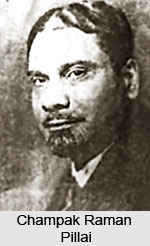 By that time during 1914, World War I had already commenced. But the Indians at that point of time also tried to look for the perfect opportunity for nationalist cause. The German government chose to support the Pan-Islamist and Bengali revolutionary movement in India. They were also aiming to weaken the British position as early as 1912. In 1914, German Chancellor Theobald von Bethmann Hollweg sanctioned German activities against India. Max von Oppenheim was the head of the German effort. He was an archaeologist as well as the head of the newly formed Intelligence Bureau for the east.
By that time during 1914, World War I had already commenced. But the Indians at that point of time also tried to look for the perfect opportunity for nationalist cause. The German government chose to support the Pan-Islamist and Bengali revolutionary movement in India. They were also aiming to weaken the British position as early as 1912. In 1914, German Chancellor Theobald von Bethmann Hollweg sanctioned German activities against India. Max von Oppenheim was the head of the German effort. He was an archaeologist as well as the head of the newly formed Intelligence Bureau for the east.
During that time, some Indian residents in Germany had issued statements expressing strong disapproval against England and France for their support to the Czar under the headship of M. Prabhakar, who was then teaching at Dusseldorf after graduating from Heidelberg, along with Abd ur Rahman and A Siddiqui. But Max von Oppenheim looked for more outstanding revolutionaries who could provide more weight to the cause. To carry out this task, he gave charge to a young officer of the Auswärtiges Amt, Otto Gunther von Wesendonck. During this time similar statements were also issued by Abhinash Bhattacharya and Virendra Nath Chattopadhyay. A close friend, Anna Maria Simon also helped in distributing the statement in Austria-Hungary, Switzerland and Netherlands, in addition to Germany. The statement had however also managed to attract editorial comments.
They established their headquarters after coming to Berlin in the Schoenberg suburbs. On 3rd September 1915, the trio first met with the foreign office contact Max von Oppenheim. At this meeting Virendra Nath Chattopadhyay presented the aims and requirements of the committee--
With a view to starting a revolution in India -
• Money, arms, ammunition as well as expert advice was needed; they should be carried to the Indian coast; early arrangement should be made to send the men themselves back to India.
• A large number of 10 rupee notes were to be forged and sent to India to create some confusion within the money market.
• An Indo-German Committee should be constituted to co-ordinate and carry on those activities.
These messages were transmitted to Indian students in German Universities, as well as in Switzerland, Austria and Holland, who shared the same views in all probability. At that time, many were associated with the organisation, like Dr. Dhiren Sarkar, Chanji Kersasp, N. S. Marathe, Dr. J. N. Dasgupta, C. Padmanabhan Pillai, his brother, Champak Raman Pillai. Durign that time, the `Champak-Chatto` Berlin Committee came into existence. But Max von Oppenheim did not approach Shyamji Krishnavarma and also refused to get in touch with Lala Lajpat Rai. In 1915, Har Dayal and Barkatullah came forth to join the organisation. The committee is also known to have spread missions to Istanbul, Persia, Baghdad, and Kabul.
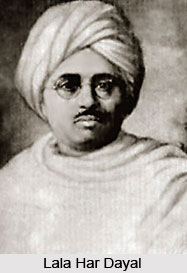 Berlin Committee soon started contacting the Indian revolutionaries. Praiseworthy freedom fighter Bagha Jatin was also contacted. They also started meeting the Indian Prisoners of War. Lala Har Dayal also came forward to support the committee`s cause. Berlin Committee also instituted links with the Ghadarite movement in the United States. On 22nd September 1915, key personas Dr. Dhiren Sarkar and N.S. Marathe left for Washington. They however managed to establish association with the Ghadar Party with the help of the German Ambassador Johann von Bernstoff.
Berlin Committee soon started contacting the Indian revolutionaries. Praiseworthy freedom fighter Bagha Jatin was also contacted. They also started meeting the Indian Prisoners of War. Lala Har Dayal also came forward to support the committee`s cause. Berlin Committee also instituted links with the Ghadarite movement in the United States. On 22nd September 1915, key personas Dr. Dhiren Sarkar and N.S. Marathe left for Washington. They however managed to establish association with the Ghadar Party with the help of the German Ambassador Johann von Bernstoff.
Berlin-Indian Committee that became the Indian Independence Committee after 1915, played an instrumental role in an Indo-German-Turkish mission to the Indo-Iranian border. Their main aim was to promote awareness amongst the tribes to strike against British interests. At that time, the Berlin committee was also in touch with the Khairi brothers (Abdul Jabbar Khairi and Abdul Sattar Khairi). They had settled at Constantinopole, at the onset of a war. Later in 1917, Berlin Committee along with the brothers suggested to the Kaiser a plan to head tribes in Kashmir and NWFP against British involvements.
On October 1915, another group led by Deobandi Maulana Ubaid Allah Sindhi and Mahmud al Hasan (principle of the Darul Uloom Deoband), reached Kabul with plans to enlighten a Muslim insurrection in the tribal belt of India. Ubaid Allah for this intention suggested that the Amir of Afghanistan was to declare war against Britain while Mahmud al Hasan sought for German and Turkish assistance.
Mahmud al Hasan went forward to Hijaz. In the meantime, Ubaid Allah managed to establish favourable relations with the Amir. In Kabul with the help some students, Ubaid Allah made up everybody`s mind that the pan-Islamic cause will be best served by focussing on the Indian Freedom Movement. These students had preceded him to make their way to Turkey to join the Caliph`s "Jihad" against Britain. In December 1915, this group met the Indo-German-Turkish mission to Kabul. The mission was headed by Oskar von Niedermayer. The delegation also involved and included members like Werner Otto von Hentig, the German diplomatic representative to Kabul, as well as Raja Mahendra Pratap, Barkatullah and other outstanding nationalists from the Berlin group.
The Indo-German-Turkish mission also brought messages from the Kaiser, Enver Pasha along with bringing members of the Indian movement right to India`s border. They also brought the terminated Khedive of Egypt, Abbas Hilmi, who had expressed support for Pratap`s mission. They also invited the Amir to move against India. The mission possessed an immediate aim to rally the Amir against British India and to prevail a right of free passage from the Afghan Government.
But the Amir declined to institutionalise for or against the proposals. Eventually the mission received support from the Amir`s immediate and close political and religious advisory group, which inclided his brother Nasrullah Khan, his sons Inayatullah Khan and Amanullah Khan, religious leaders and tribesmen. It also earned support from one of Afghanistan`s the then most authoritative newspaper, Siraj al-Akhbar. The editor of the newspaper, Mahmud Tarzi took Barkatullah as an officiating editor in early 1916. It was Mahmud Tarzi with whose initiation a number of inflammatory articles by Raja Mahendra Pratap was published in a series. Siraj al-Akhbar also published increasingly anti-British and pro-Central articles and propaganda. By May 1916 the tone of the paper was viewed serious enough for The Raj to intercept the copies. In 1916, a further effort was ensued in the establishment of the Provisional Government of India in Kabul.
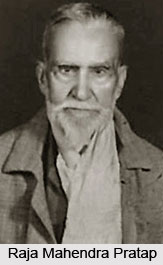
In early 1916, the Provisional Government of India was organised to accentuate the seriousness of intention and purpose. The government comprised Raja Mahendra Pratap as President, Barkatullah as Prime Minister and Ubaid al Sindhi as the Minister for India, Maulavi Bashir as War Minister and Champakaran Pillai as Foreign Minister. The government was looking out to obtain support from Tsarist Russia, Republican China, and Japan. They also earned support from Galib Pasha, promulgating Jihad against Britain.
Following the February Revolution in Russia in 1917, Pratap`s Government started to correspond with the nascent Soviet Government. In 1918, Mahendra Pratap had met Trotsky in Petrograd. The meeting took place before the meet with the Kaiser in Berlin. Both meetings were held with an urge to mobilise against British India. But under tremendous pressure from the British, the Afghan withdrew their cooperation and as a result the mission was closed down. The mission, the offers and liaisons of the German mission notwithstanding had an abysmal impact on the political and social situation in the country. This initiated a process of political change that culminated in 1919 with the assassination of Habibullah. The assassination ensued in the transfer of power to Nasrullah and subsequently Amanullah and the descending Third Anglo-Afghan War that led to Afghan Independence. The Berlin Committee under official authorisation was dissolved in November 1918. Most of the members shifted their attention to the emergent Soviet Russia; and several members of Berlin Committee transferred their attention towards active communism between 1917 and 1920.


